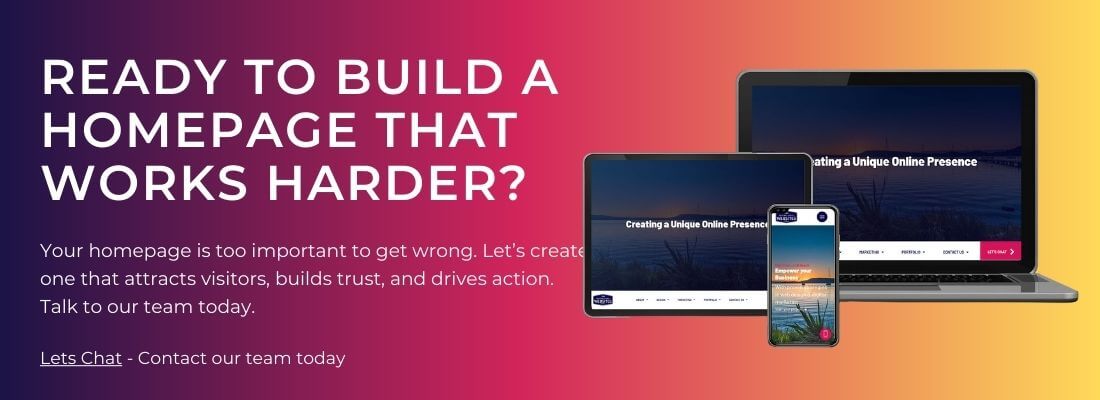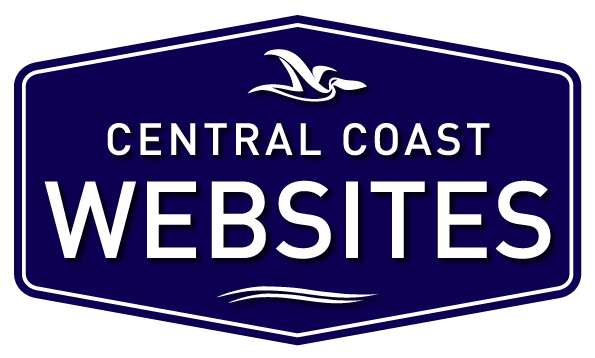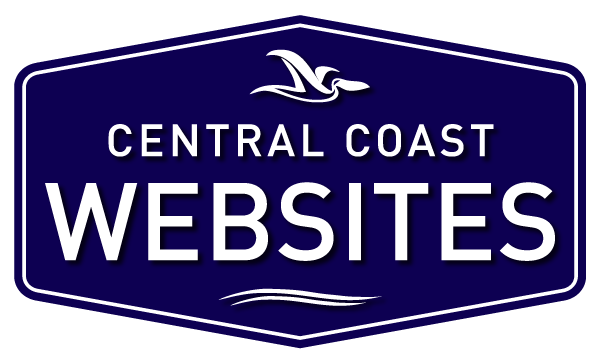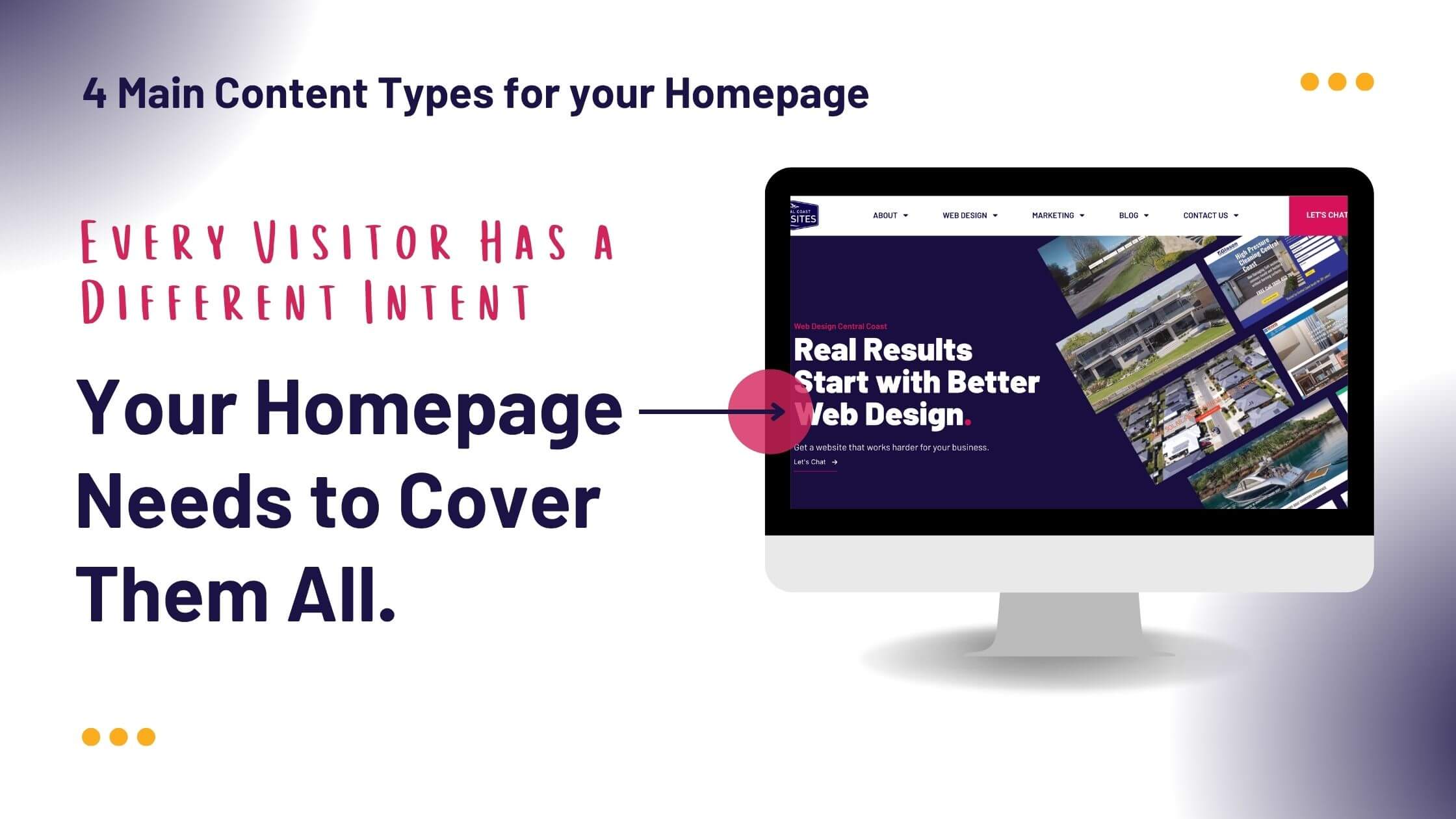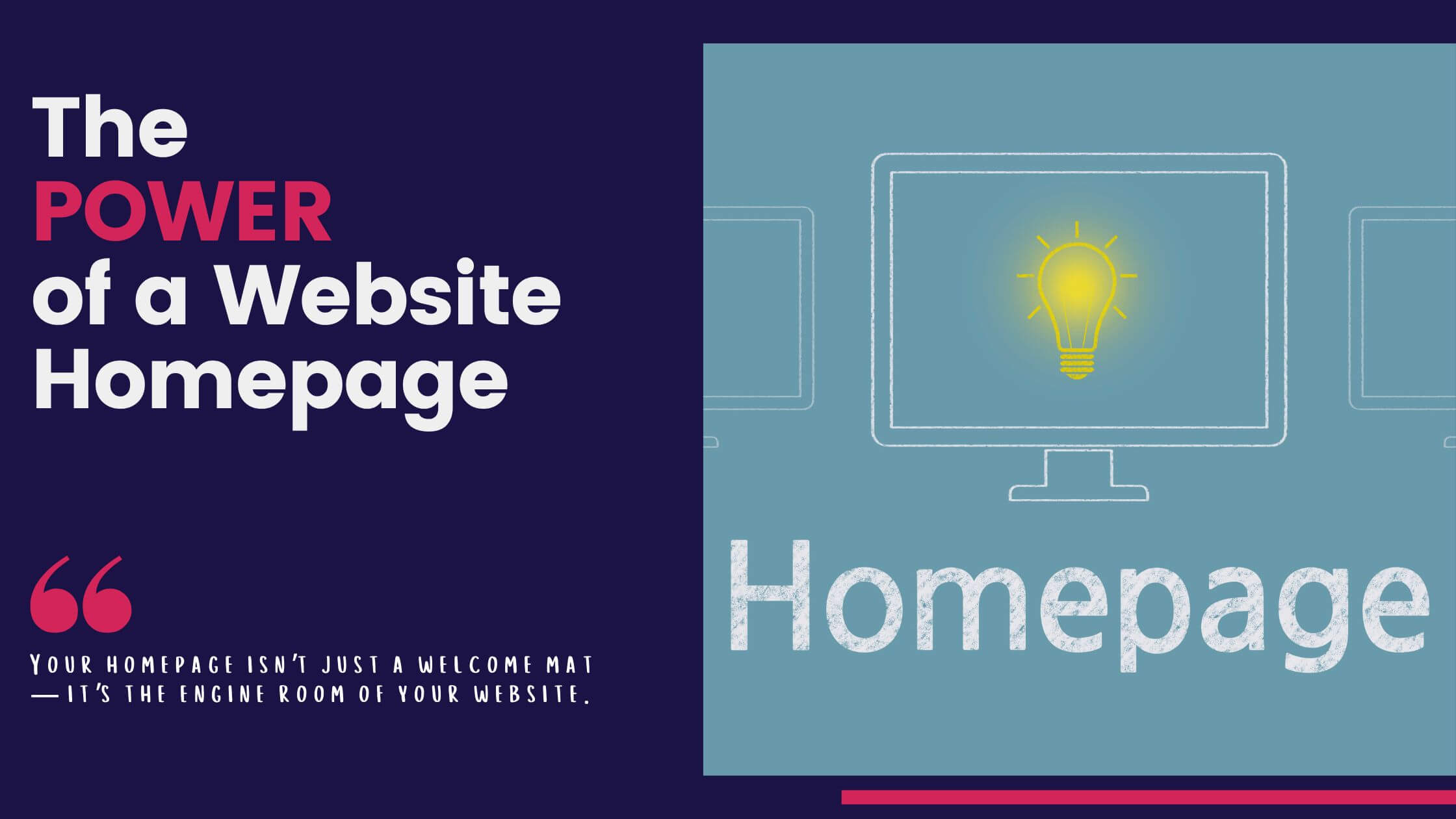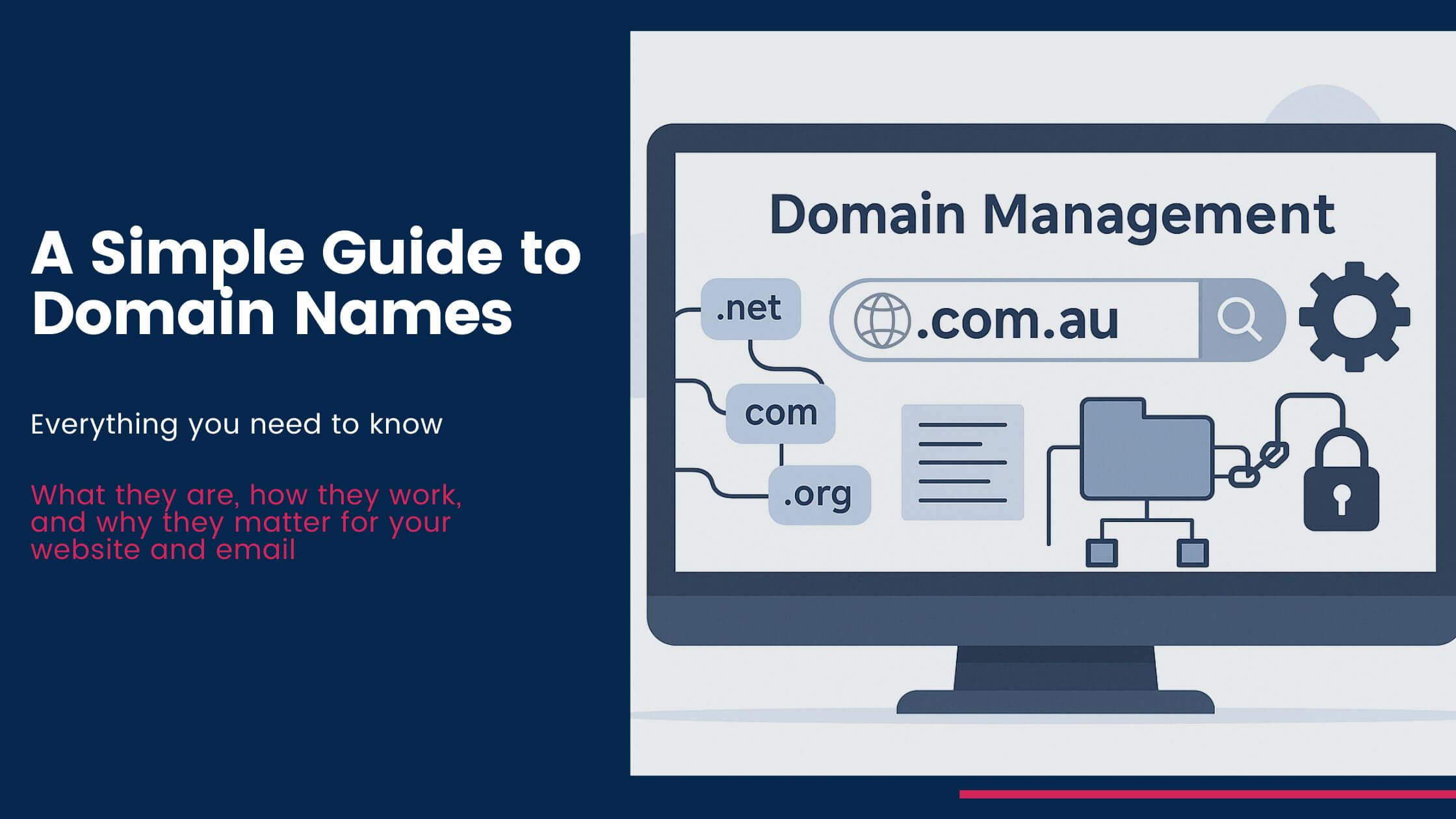Why "Above the Fold" Matters in Web Design.
When someone lands on the homepage of your website, you don’t have much time to convince them they’re in the right place. In fact, most people decide whether to stay or leave in just a few seconds. That’s why the section of your homepage that people see first, before they scroll, is so important. In web design, we call this space “above the fold.”
What Does “Above the Fold” Mean?
The term “above the fold” comes from newspapers. Back when papers were displayed folded in half, the most important stories and eye-catching headlines were always placed above the fold, because that’s what people saw first.
In web design, “above the fold” is the same idea. It’s the content you can see on the screen without scrolling. But unlike newspapers, there isn’t one fixed fold online, it changes depending on screen size, device, and even browser settings. Still, the principle holds: what people see immediately on arrival is the most valuable space you’ve got.
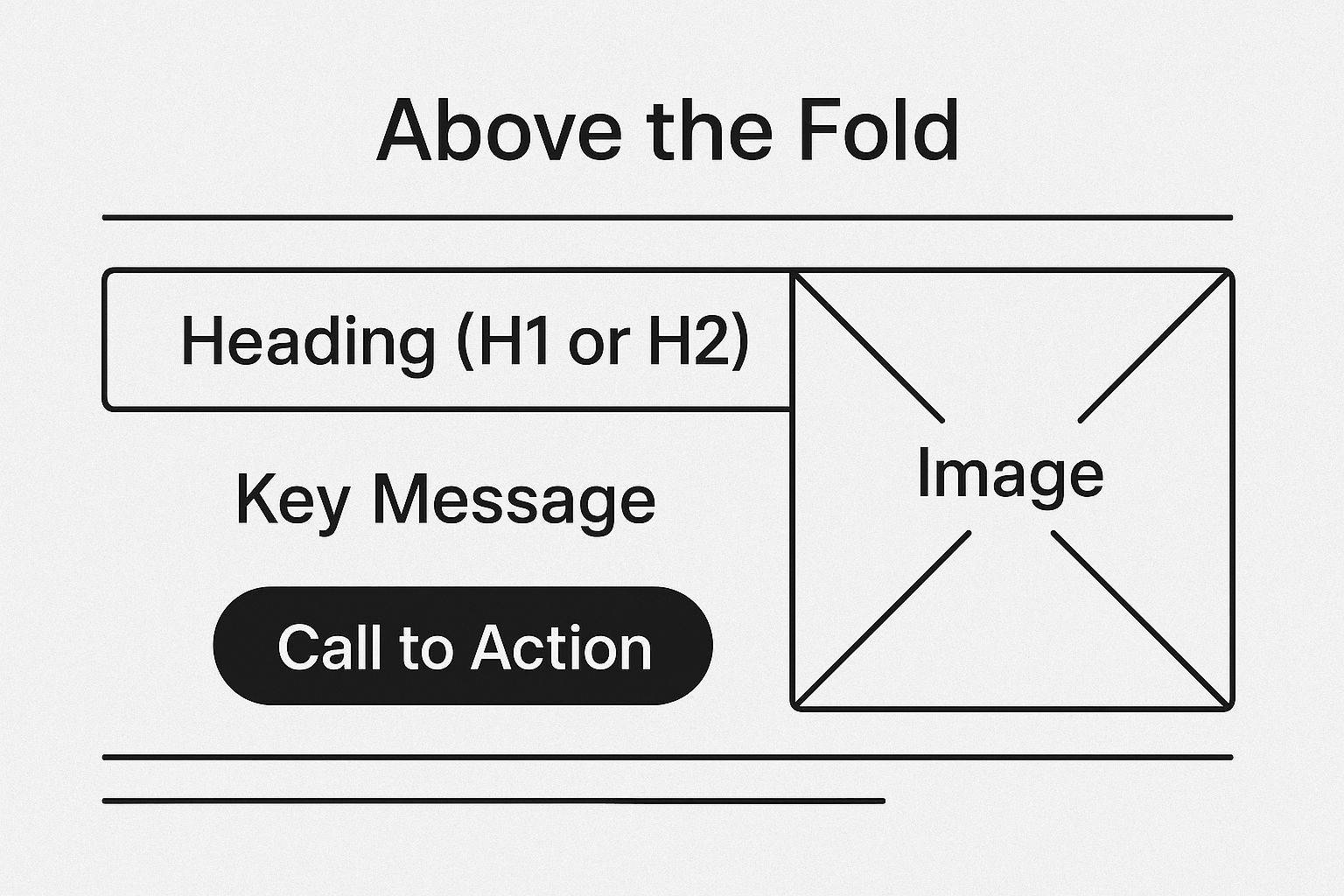
Why “Above the Fold” Matters in Web Design.
From experience, this is where your homepage either hooks someone or loses them. Here’s why it matters so much:
- First impressions: Visitors decide in seconds if you’re relevant to them.
- Visibility: It’s the highest-value real estate on your site.
- Conversions: It’s where your most important calls to action often perform best.
- Trust: It’s your chance to show clarity, credibility, and confidence straight away.
If your above-the-fold content is vague, cluttered, or missing a call to action, you’ll lose people before they’ve even had a chance to see what you really offer.
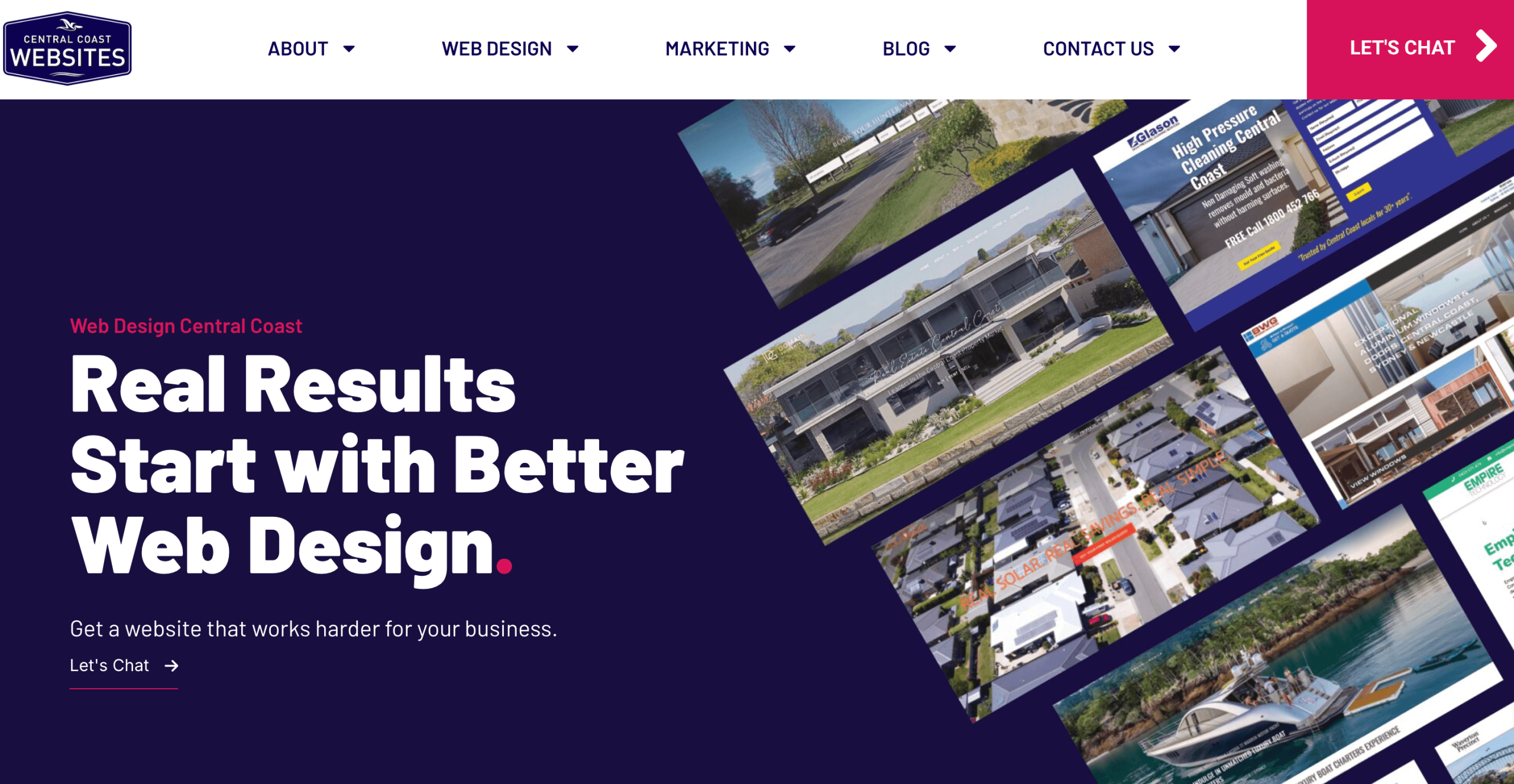
What to Put Above the Fold.
Getting above the fold right doesn’t mean cramming in as much as possible — it’s about prioritising. This is where your key messaging matters most. Having the right keywords in your headings helps with SEO, but it’s the messaging itself that connects with users. People don’t just respond to keywords, they respond to clarity, confidence, and a sense that you understand their needs.
Here’s what I recommend including above the fold:
- A clear headline and subheading that explain exactly what you do and who you help.
- A primary call to action, such as “Book Now” or “Get a Quote.”
- A strong visual, whether it’s a hero image, video, or graphic that represents your brand promise.
- Optional but powerful: a quick trust element, like review stars or partner logos, to give instant credibility.
The goal here isn’t to tell your whole story. It’s to set the hook, show people they’re in the right place, give them a reason to trust you, and make the next step obvious.
For example (keyword-driven vs vague):
✕ “Welcome to Our Website” — generic and forgettable, offers no value or clarity.
✔ “Expert Web Design on the Central Coast — Websites Built to Grow Your Business” — keyword aligned, but also a strong piece of messaging that speaks directly to user needs.
For example (visitor-focused key message without sole focus on keywords):
✕ “Professional Pressure Cleaning Services” — factual, but cold and unengaging.
✔“Bring Your Surfaces Back to Life — Safe, Powerful Pressure Cleaning for Your Home” — not keyword-stuffed, but speaks to the outcome visitors care about most.
Practical Tips from Experience.
Here are a few lessons I’ve picked up over the years working on homepages:
- Design for clarity first, creativity second. A clever design is useless if people can’t instantly see what you do.
- Test your CTAs. Sometimes changing a button label from “Submit” to “Get Started” makes a measurable difference.
- Don’t rely on above the fold to do all the work. It should hook people in, but the rest of the page still has to deliver.
- Use analytics. Tools like scroll depth and heatmaps will show you how people interact with your above-the-fold content and whether it’s working.
Utilising the Most Valuable Real Estate on your Site.
Above the fold is the most valuable real estate on your website. Done well, it grabs attention, builds trust, and nudges visitors towards action. Done poorly, it loses them before they’ve even had the chance to get to know you.
If you’re planning a new website or refreshing your homepage, pay close attention to what sits above the fold. It’s often the difference between a site that works and a site that just looks nice.
And if you’d like an expert review of your homepage or advice on how to make your above-the-fold layout more effective, get in touch. It’s something I work on every day, and I’d be happy to help.
